When the Maori arrived in Aotearoa (Land of the Long White Cloud) they settled predominantly on the North Island. It was just too cold here on South Island for them to maintain settlements.
We spent a rainy morning in Wellington at Te Papa, the “Museum of New Zealand.” With only a few hours to explore the vast treasures of NZ history and culture we focused on the Maori collection, natural history, environment, and European settlement exhibits. The building dominates the waterfront and includes an outdoor bush area. The Maori collection
 includes it own marae (meeting house) and waka (canoe). Ornate carvings on the marae depict ancestors and gods. A person in the know can go into a marae and “read” the tribe’s history. Beautifully carved waka are a source of great mana (prestige) for an iwi (tribe) and are protected by tapu (sacredness).
includes it own marae (meeting house) and waka (canoe). Ornate carvings on the marae depict ancestors and gods. A person in the know can go into a marae and “read” the tribe’s history. Beautifully carved waka are a source of great mana (prestige) for an iwi (tribe) and are protected by tapu (sacredness).
Another fine art form is bone or pounamu (greenstone) carvings. Tiki (stylised human forms) and fish-hook pendants are carved in traditional and modern styles. Paua (abalone) shell is also carved into beautiful ornaments and jewellery and inlaid into Maori carvings. There were fine examples of all of these in the museum. Photographs were not allowed in the Maori collection so this one is from the Mitai Village we visited later.
The natural history and environment exhibits chronicle the interrelationships of the various peoples with the land. As one of the last places on earth to be colonized by humans, NZ was for millennia a safe laboratory for risky evolutionary strategies but with the arrival of the first Maori between about 1250 and 1300 AD and soon after by Europeans in 1642, things went downhill quickly. Both the Maori and the Europeans cleared vast areas of bush. The museum chronicles the challenges facing the native flora and fauna. Introduced species have caused an awful lot of problems leading to numerous extinctions. Several small islands around the country have been cleared of predators and had native species reintroduced in wildlife sanctuaries. Riccarton Bush here in ChCh has a predator proof fence around it to protect the nesting birds.
Maori cultural performances and traditional hangi are popular in Rotorua. We did the tourist bit and visited the Mitai Maori Village. Our tour consisted of a bush walk, a concert, and hangi. Once we were booked for the tour, a bus picked us up at the backpackers. Upon arrival at the village we were shepherded into a tent for before dinner drinks. The master of ceremonies warmed the crowd up with local banter and established that we were a tribe of 20 nations (countries of origin including Hawaii). Dror, a young guy from Israel volunteered to be our chief. Females were excluded from volunteering because if a male warrior falls in battle one person dies but if a female dies a whole family is wiped out. On our first bush walk we saw our hangi (traditional earth oven cooked meal) being slowly steamed on our way down to the stream. The hangi is similar to the Hawaiian imu or New England lobster bake but now commercialized for the masses.
Maori cultural performances and traditional hangi are popular in Rotorua. We did the tourist bit and visited the Mitai Maori Village. Our tour consisted of a bush walk, a concert, and hangi. Once we were booked for the tour, a bus picked us up at the backpackers. Upon arrival at the village we were shepherded into a tent for before dinner drinks. The master of ceremonies warmed the crowd up with local banter and established that we were a tribe of 20 nations (countries of origin including Hawaii). Dror, a young guy from Israel volunteered to be our chief. Females were excluded from volunteering because if a male warrior falls in battle one person dies but if a female dies a whole family is wiped out. On our first bush walk we saw our hangi (traditional earth oven cooked meal) being slowly steamed on our way down to the stream. The hangi is similar to the Hawaiian imu or New England lobster bake but now commercialized for the masses.



The concert consisted of singing and dancing. The Maori did not have a written history so it was kept in long, specific, and stylized songs and chants. The women twirling poi balls (flax balls tied to the end of cord) reminded me of May Day celebrations at Manoa School. I think we learned how to do poi balls in 4th grade. Games of agility with sticks thrown back and forth were also reminiscent of elementary school. The men demonstrated training with spears and greenstone weapons. The chief explained some of the moku (tattoo) patterns.  Traditionally, the higher classes were decorated with intricate designs – women had moku only on their chins and lips, while high-ranking men not only had tattoos over their entire face, but also over other parts of their body (especially their buttocks). The tattoos were created using bone chisels, a mallet, and blue pigment. Here is a carving with sample tattoos.
Traditionally, the higher classes were decorated with intricate designs – women had moku only on their chins and lips, while high-ranking men not only had tattoos over their entire face, but also over other parts of their body (especially their buttocks). The tattoos were created using bone chisels, a mallet, and blue pigment. Here is a carving with sample tattoos.
 Traditionally, the higher classes were decorated with intricate designs – women had moku only on their chins and lips, while high-ranking men not only had tattoos over their entire face, but also over other parts of their body (especially their buttocks). The tattoos were created using bone chisels, a mallet, and blue pigment. Here is a carving with sample tattoos.
Traditionally, the higher classes were decorated with intricate designs – women had moku only on their chins and lips, while high-ranking men not only had tattoos over their entire face, but also over other parts of their body (especially their buttocks). The tattoos were created using bone chisels, a mallet, and blue pigment. Here is a carving with sample tattoos.The concert climaxed with the haka. Haka is Maori for any form of dance but has come to be associated with the chant that traditionally preceded a battle or challenged suspicious visitors. Delivered with fierce shouting, flexing arm movements, that resemble fists pummelling the side of someone’s head, and thunderous stamping to grind whatever is left into the dust, it is indeed a frightening sight. Bulging eyes and tongues poking out complete the scary picture. Each tribe had its own haka but the most famous one comes from Te Rauparaha (1768 – 1849). Made famous by the All Blacks (NZ national Rugby team) the haka is: (check out Youtube)
Ka mate, ka mate (It is death, it is death)
Ka ora, ka ora (It is life, it is life)
Tenei te tangata puhuruhuru (Behold the hairy man)
Nana nei i tiki mai i Whakawhiti te ra (Who caused the sun to shine)
Upane, aupane (Abreast, keep abreast)
Upane, ka aupane (The rank, hold fast)
Whiti te ra (into the sunshine)
Unfortunately my camera does not do well in low light so no good shots of the concert. After the concert we returned to the tent for our dinner of chicken, lamb, stuffing, potatoes, kumara (sweet potato), cabbage salad, cauliflower salad, green salad, and rolls followed by dessert of trifle and chocolate jelly roll cake. They say this is the traditional meal.
After dinner we went for another bush walk which included some Maori mythology, medicine, a peek at glow worms, and a look at the Fairy Spring that supports the Mitai iwi. We spotted trout and eels in the spring.
We had what I consider a more traditional meal later while in Plimmerton. Kevin, one of the road construction crew staying long term at Moana Lodge, boiled up a huge pot of wild boar (he had killed it with a knife) with freshly collected watercress. He served it with roasted kumara and potatoes. He was sharing samples with any and all comers. It was like nothing we had ever had before but very delicious.
When Doug attended a conference in Auckland in Feb 2007, he made connections with Bryan and Sean. They were looking for someone to characterize the material properties of clay with pumice as a building material for sustainable family buildings in rural Taupo. Doug and Sarah visited the house site on Te Toki Road. Doug took samples of the local clay and pumice back to Boston and had a master’s student do his research on the thermal and strength characteristics of the adobe-like material. We returned to Taupo so Doug could meet with Bryan and Sean and present the results. We visited the house site to see the progress of the building. The architecture of the home is based on the traditional Maori marae. Doug was disappointed that they have not yet started making the clay/pumice walls.
We visited the house site to see the progress of the building. The architecture of the home is based on the traditional Maori marae. Doug was disappointed that they have not yet started making the clay/pumice walls.
Ka mate, ka mate (It is death, it is death)
Ka ora, ka ora (It is life, it is life)
Tenei te tangata puhuruhuru (Behold the hairy man)
Nana nei i tiki mai i Whakawhiti te ra (Who caused the sun to shine)
Upane, aupane (Abreast, keep abreast)
Upane, ka aupane (The rank, hold fast)
Whiti te ra (into the sunshine)
Unfortunately my camera does not do well in low light so no good shots of the concert. After the concert we returned to the tent for our dinner of chicken, lamb, stuffing, potatoes, kumara (sweet potato), cabbage salad, cauliflower salad, green salad, and rolls followed by dessert of trifle and chocolate jelly roll cake. They say this is the traditional meal.
After dinner we went for another bush walk which included some Maori mythology, medicine, a peek at glow worms, and a look at the Fairy Spring that supports the Mitai iwi. We spotted trout and eels in the spring.
We had what I consider a more traditional meal later while in Plimmerton. Kevin, one of the road construction crew staying long term at Moana Lodge, boiled up a huge pot of wild boar (he had killed it with a knife) with freshly collected watercress. He served it with roasted kumara and potatoes. He was sharing samples with any and all comers. It was like nothing we had ever had before but very delicious.
When Doug attended a conference in Auckland in Feb 2007, he made connections with Bryan and Sean. They were looking for someone to characterize the material properties of clay with pumice as a building material for sustainable family buildings in rural Taupo. Doug and Sarah visited the house site on Te Toki Road. Doug took samples of the local clay and pumice back to Boston and had a master’s student do his research on the thermal and strength characteristics of the adobe-like material. We returned to Taupo so Doug could meet with Bryan and Sean and present the results.
 We visited the house site to see the progress of the building. The architecture of the home is based on the traditional Maori marae. Doug was disappointed that they have not yet started making the clay/pumice walls.
We visited the house site to see the progress of the building. The architecture of the home is based on the traditional Maori marae. Doug was disappointed that they have not yet started making the clay/pumice walls.











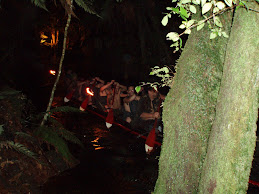
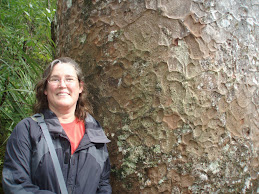
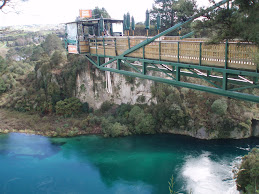
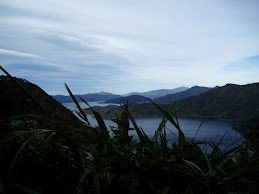
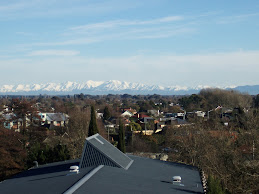
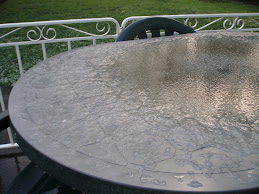
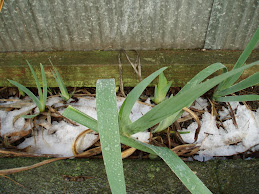
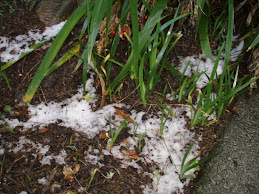


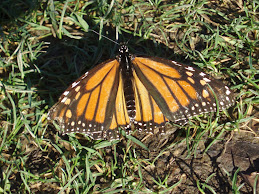
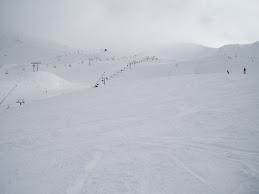
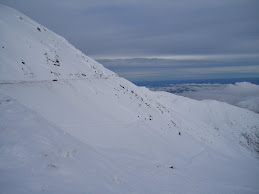
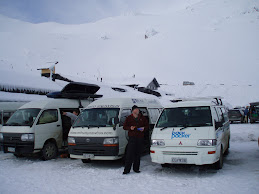

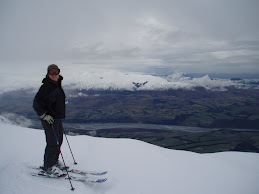




























No comments:
Post a Comment